One of the most significant negative impacts on life in urban environments isn’t merely from higher-profile concerns such as overcrowding, climate change and poor air quality—although those are all formidable problems. Unwanted noise is just as much a threat, and it’s poised to become an even greater challenge in the years ahead.
As cities grow and high-rise buildings continue to dominate skylines the world over, the constant hum of HVAC units, the clatter of construction projects and the wail of emergency vehicles are exposing urbanites to a range of unprecedented health and livability challenges.
As noted in a recent Atlantic article, the blurring of boundaries between industrial and urban zones is just one factor exposing people to ear-shattering sound levels that many (particularly those who are unable to retrofit their homes or who can’t afford to move to quieter areas) are struggling to manage.
While Ontario boasts the most stringent regulatory noise environment in North America, a steady rise in complaints and sound-related health issues underscores the need to continue working to control unwanted noise across the province’s urban centres.
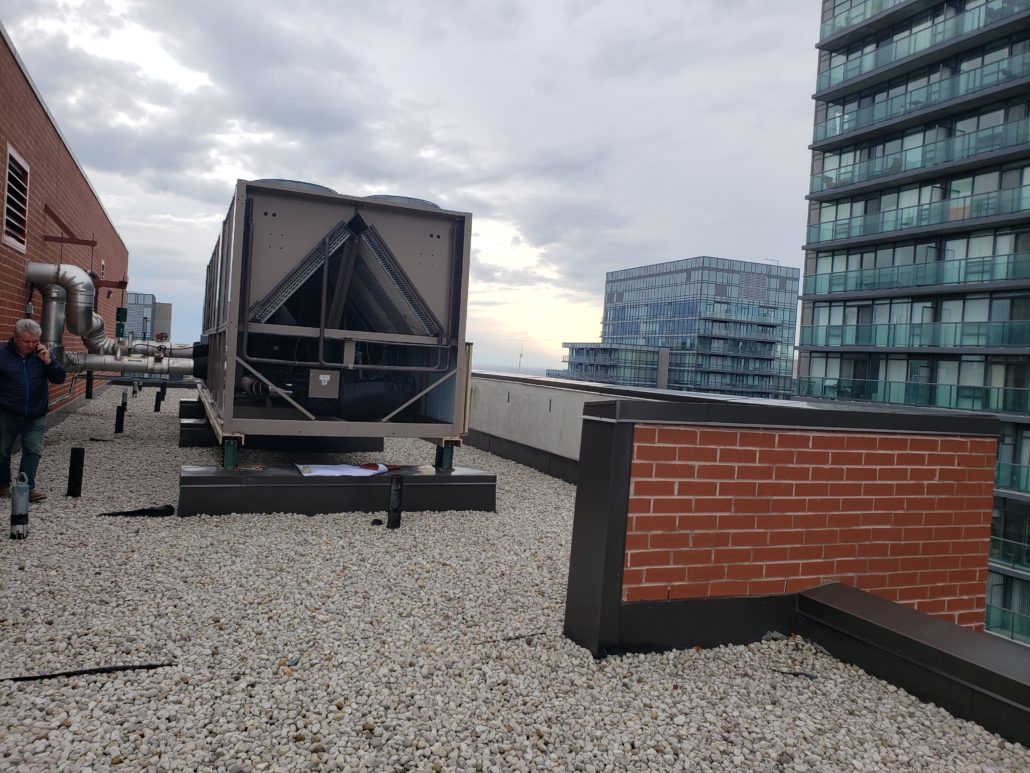
The Challenge
It’s in that context that our team was called on to address noise from an air-cooled rooftop chiller at a condominium located in downtown Toronto.
Like so many HVAC units, the chiller in question was creating a nuisance for neighbouring buildings—mainly residential—in the surrounding area. Its constant rattle and tonal hum was problematic for locals who could hear the chiller even with their windows shut. The property manager faced a raft of complaints from abutting neighbors, resulting in forced action imposed by the city’s by-law department. The property management firm takes prides in its corporate commitment to social responsibility in all communities in which it resides.
At that point, the condominium manager took action and called in the Parklane team to design, manufacture and install an effective noise control solution. Working with the acoustical consultant assigned to the project, it became obvious that noise levels from the chiller were significant and well outside acceptable acoustic limits. In fact, the consultant conducted extensive testing and discovered that sound levels from the unit would need to be lowered to 53 decibels from 71 to comply with local noise ordinances. A further imposed penalty was applied due to the tonal nature of the equipment’s operating sound levels.
We needed to develop a noise abatement strategy that would effectively integrate to the equipment and the surrounding building structure without impeding the function, capacity or operation of either. This included attenuation of the top–mounted condensing fans, side inlets, and compressors.
Visually, the solution would need to blend into the façade of the building to preserve its architectural design—a critical attribute to any metropolitan property.
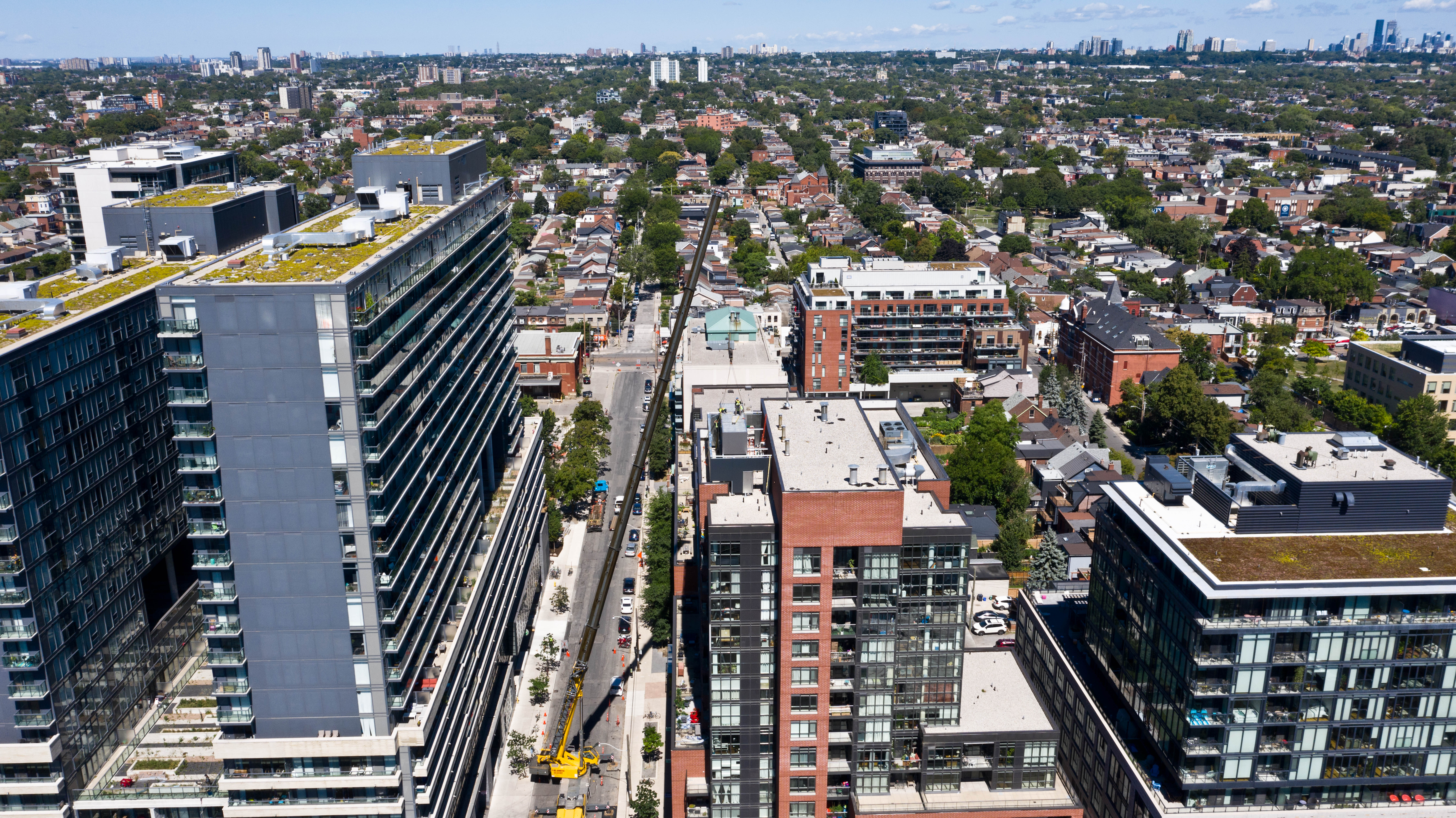
Being located in a densely-packed downtown location, we faced significant logistical constraints when working around the site. Not only were our vehicular access options limited, but the large building was filled with hundreds of residents who needed 24-hour access to enter and exit the complex. The project would need to be carefully planned to avoid any unnecessary disruptions.
Our team worked with city officials to schedule road closures on area streets to accommodate a large crane, while also limiting traffic on various days to allow crews to deliver components and carry out work as necessary.
The Solution
To achieve the required attenuation, the solution included a plenum silencer at the top of the chiller with maintenance door access for its fan components, along with a perimeter acoustic barrier wall to shield the lower–level compressors. But our team of engineers understood that the silencer and barrier wall alone wouldn’t be enough. The noise emanating from the chiller was being absorbed on three sides by the barrier wall, allowing sound to reflect off of the fourth side. To prevent that reflection, we installed perforated, galvanized steel acoustic panels to absorb the remaining sound.
Final system properties were collaboratively designed with the client’s acoustical consultant to arrive at a solution that would be optimized to the site’s constraints.
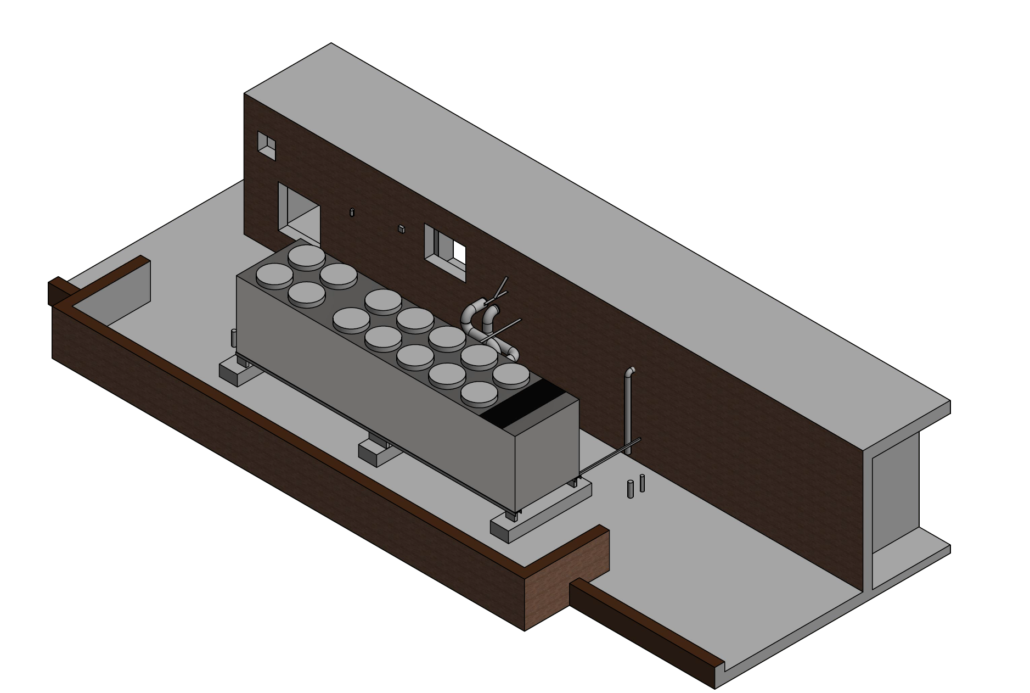
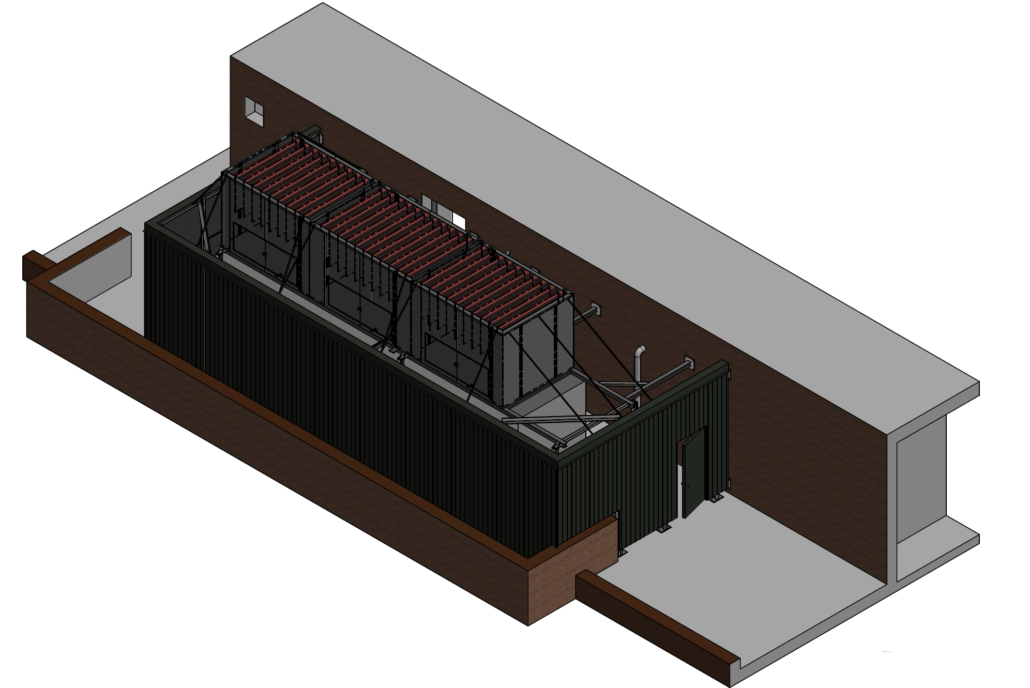
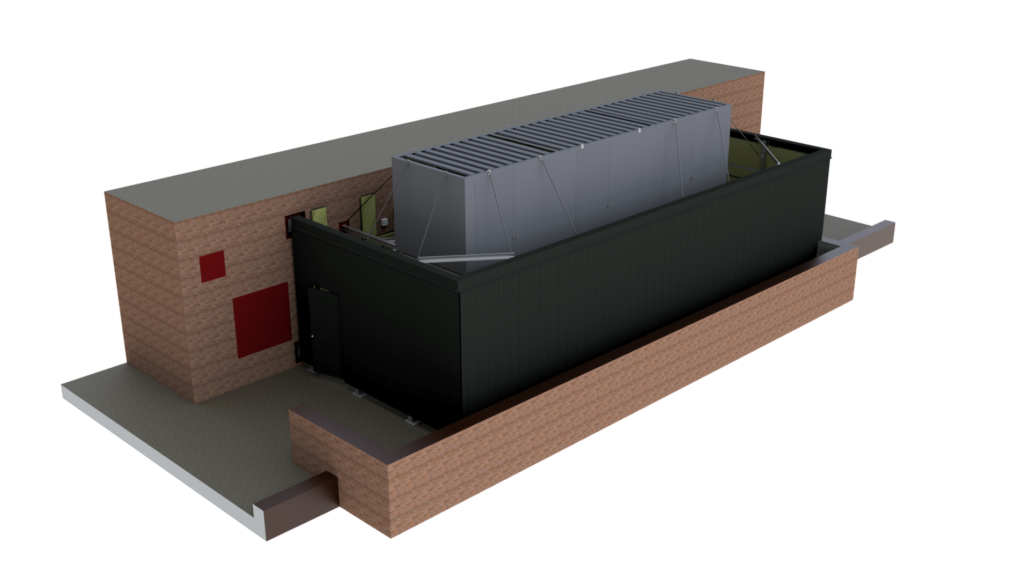
Given the building’s proximity to Lake Ontario, significant wind loads would also need to be taken into account. The uniquely designed structural array made effective use of the strongest parts of the building structure to avoid any intrusive enhancements.
To address architectural concerns, pre-finished materials for both the silencer and sound wall were carefully selected to blend into the façade of the structure.
Finally, installation of the attenuation components was a key consideration in the overall system design. Limited crane time was crucial to control both disruptions to local traffic, as well as minimizing the overall cost of the project. The entire assembly was designed in a factory-assembled, modular fashion to dramatically reduce the need for on-site fabrication.
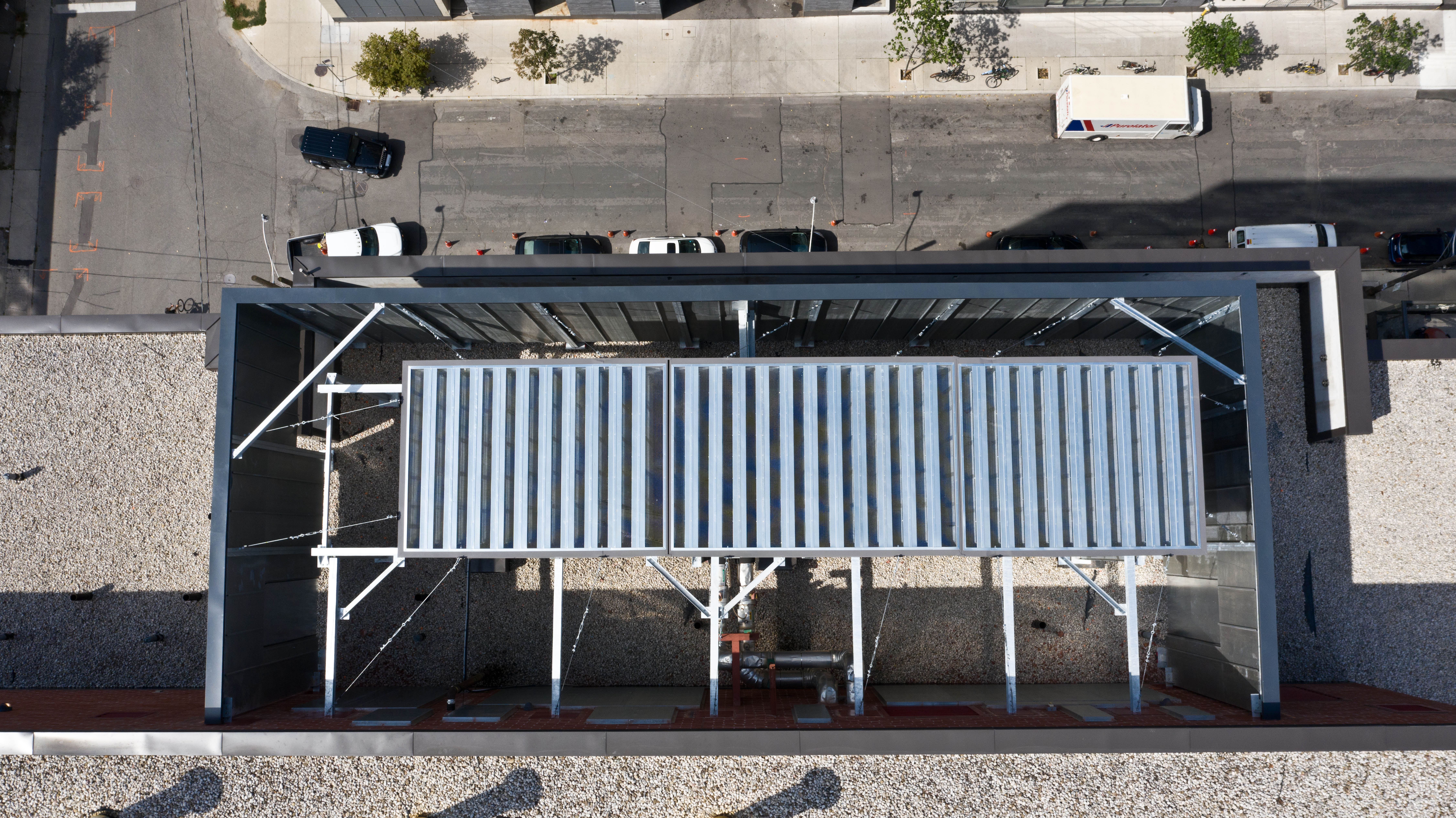
The Result
Our team was able to complete the design and installation process within the projected timelines. HVAC operations within the condominium were not disrupted during the course of the project—a key objective of our installation strategy as the property manager focused on mitigating any potential impact on building residents.
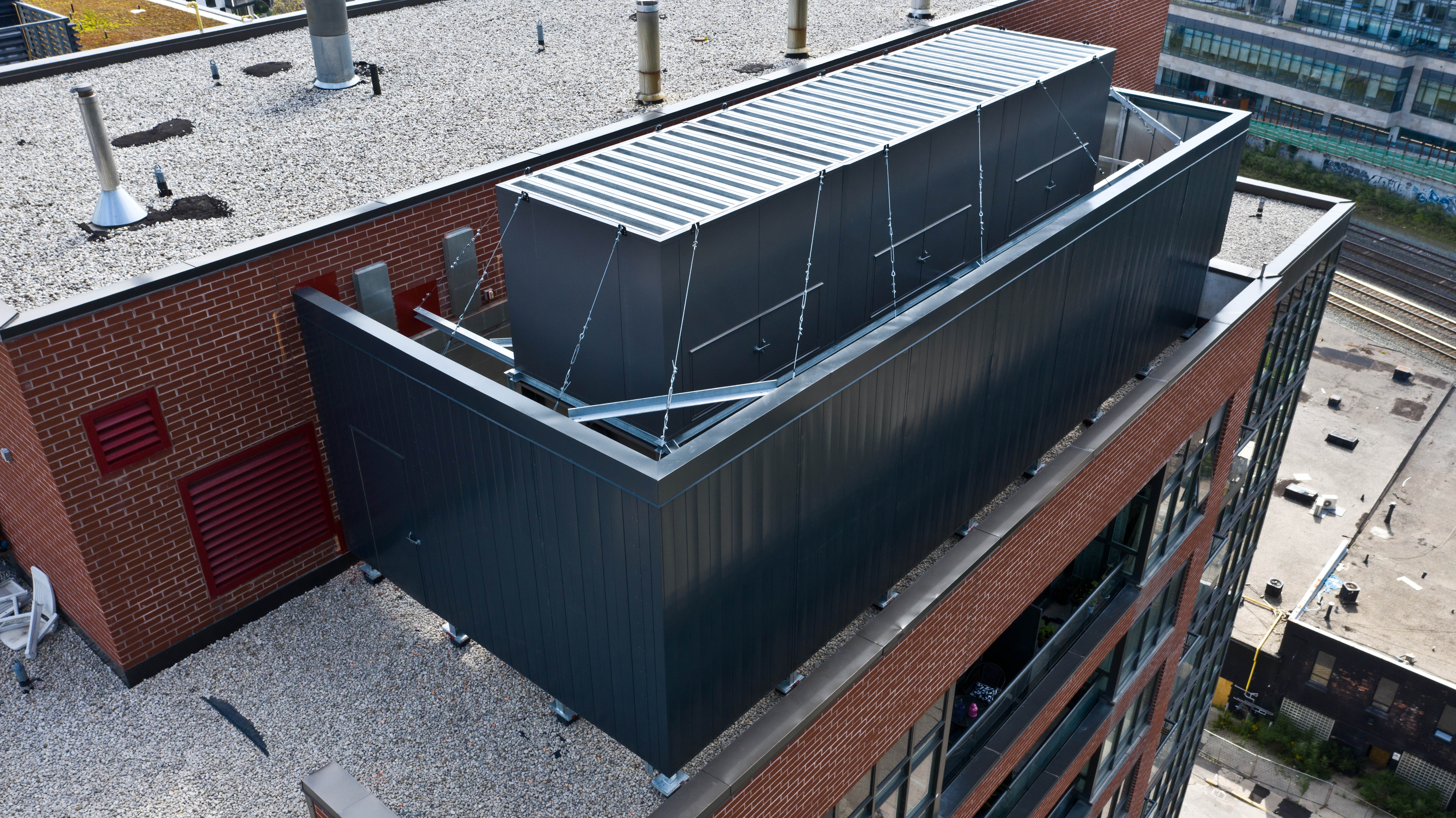
Finally, and most importantly, a post-installation audit performed by the acoustic consultant confirmed that the Parklane-supplied sound attenuation system effectively reduced noise levels to within municipal and provincial ordinances. Local neighbours and the property manager were both incredibly happy with the results after the noise abatement components were installed.
For the condominium, the risk of non-compliance fines has been all but eliminated and the cost-effective project was completed on-time and on-budget.
For more Parklane success stories, visit our Case Study library.
